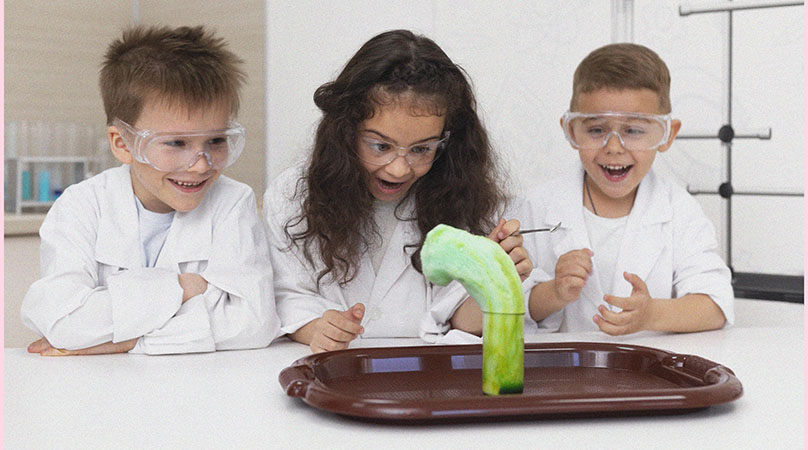Blog Details
- Home
- Blog
25.01.2023
5 Fun and Easy Science Experiments for Kids
Science is a fascinating subject for children of all ages, and there are countless ways to make it fun and engaging.

Here are five easy science experiments that you can do with your kids at home to spark their interest in the world around them.
1. The “walking water” experiment: This is a simple and visually striking experiment that demonstrates how water moves through different materials. All you need is three clear glasses, water, and food coloring. Fill one glass with water and add food coloring to it. Then, place a piece of paper towel or string between the first glass and the second glass and add food coloring to the second glass. Repeat this process with the third glass. The water will “walk” up the paper towel or string and transfer the food coloring from one glass to the next, creating a colorful display.
2. The “magic milk” experiment: This experiment uses the properties of dish soap to create a mesmerizing display. All you need is a shallow dish, milk, food coloring, and dish soap. Fill the dish with milk and add a few drops of food coloring. Then, add a drop of dish soap to the middle of the dish and watch as the colors swirl and dance.
3. The “volcanic eruption” experiment: This experiment is a classic and always a hit with kids. All you need is baking soda, vinegar, and a small container or volcano mold. Mix baking soda and a small amount of water to create a paste. Place the paste in the container or volcano mold and pour vinegar over it. The mixture will react and create a bubbling, “erupting” volcano.
4. The “dancing oobleck” experiment: This experiment uses the properties of a non-Newtonian fluid called oobleck. Mix cornstarch and water together until you have a consistency that is thick but still pourable. When you apply pressure to it, it will harden, but when you release it, it will become liquid again. Kids will have fun playing with it and observing how it changes consistency.
5. The “grow your own crystals” experiment: This experiment is a great way to explore the process of crystal formation. All you need is a jar, water, salt, and a string. Mix water and salt together until the salt no longer dissolves and the solution becomes saturated. Tie a string to a pencil and place it in the jar, making sure the string is fully submerged in the solution. Leave the jar in a warm, sunny spot, and over time, the salt crystals will form and grow on the string.
These are just a few examples of the many fun and easy science experiments you can do with your kids. Not only are they engaging and entertaining, but they also help children learn about the world around them and develop critical thinking skills. Have fun exploring the world of science with your little ones!


